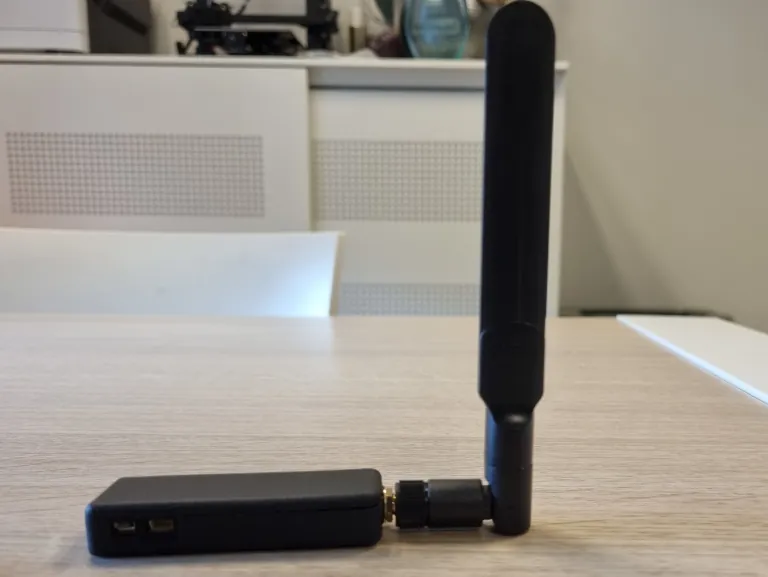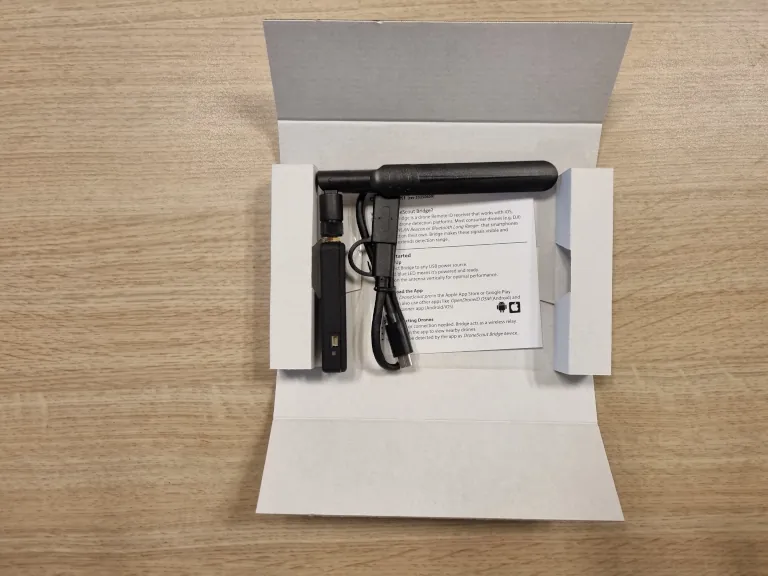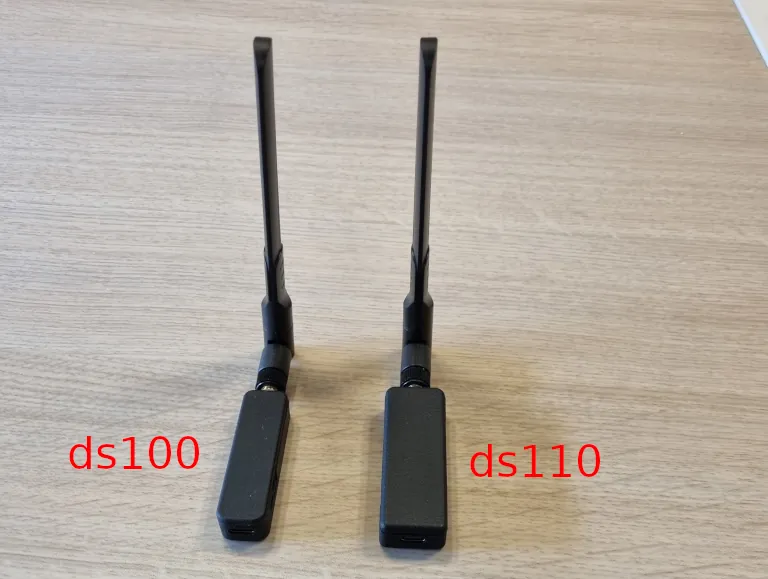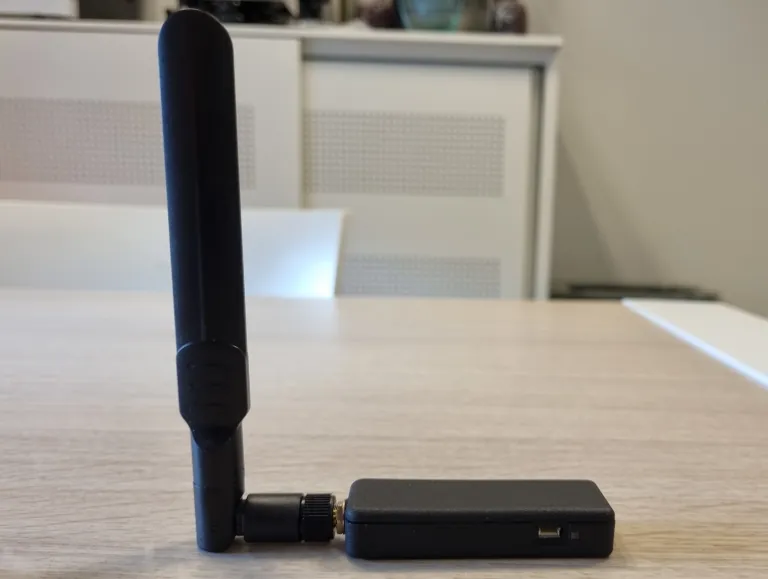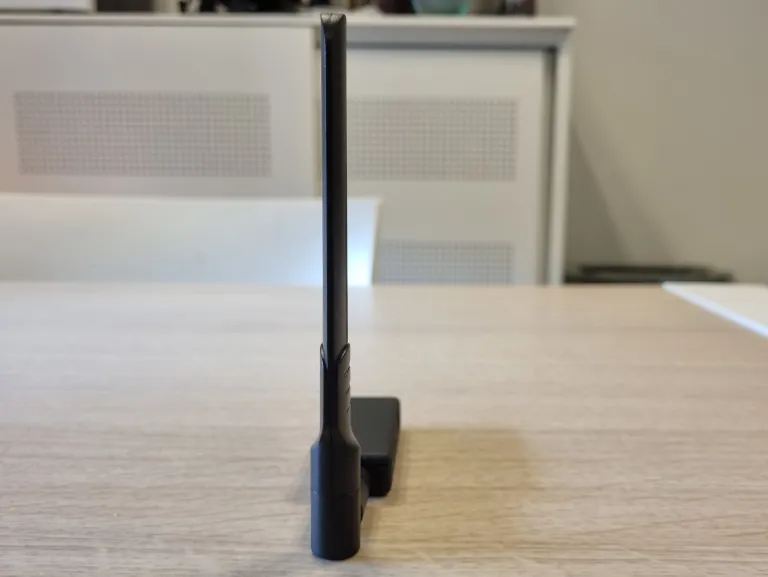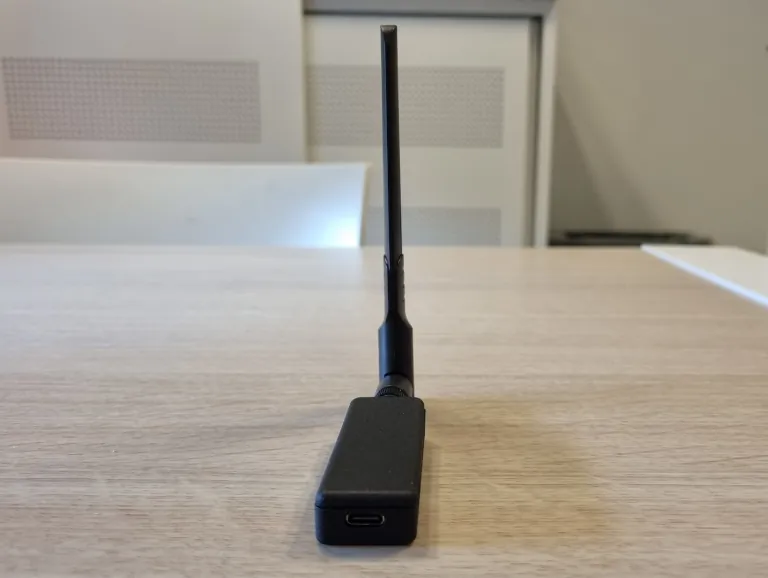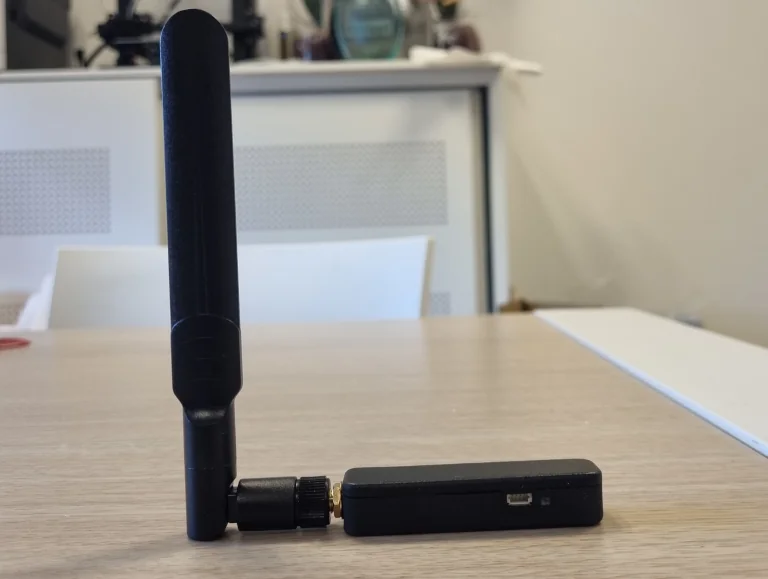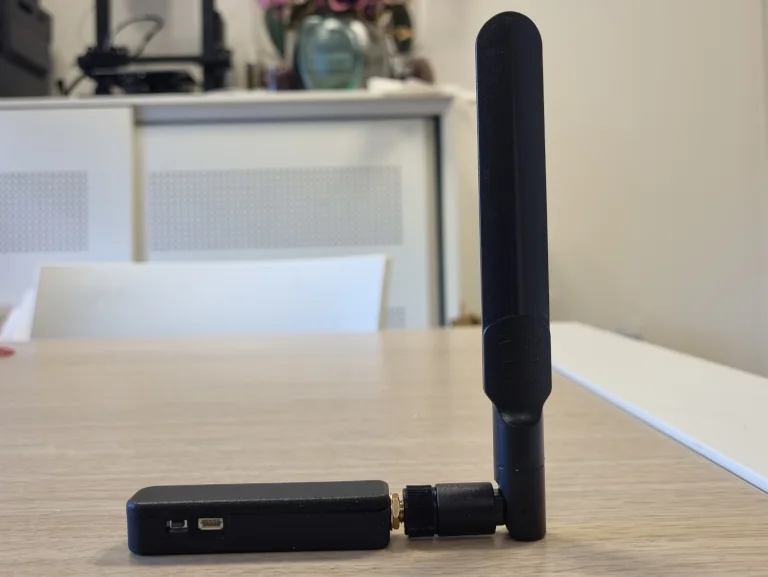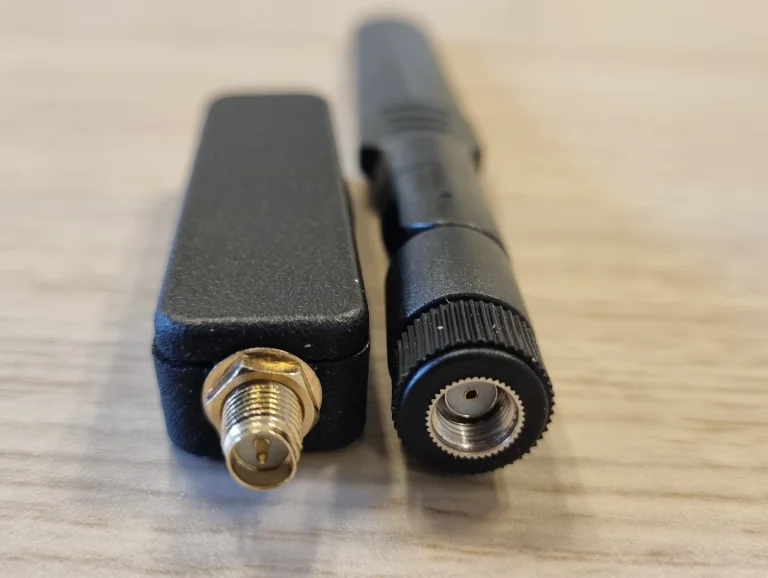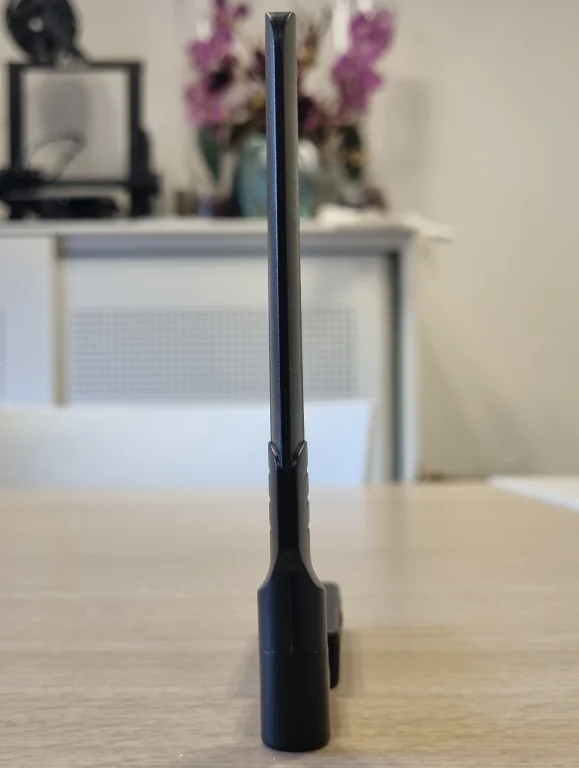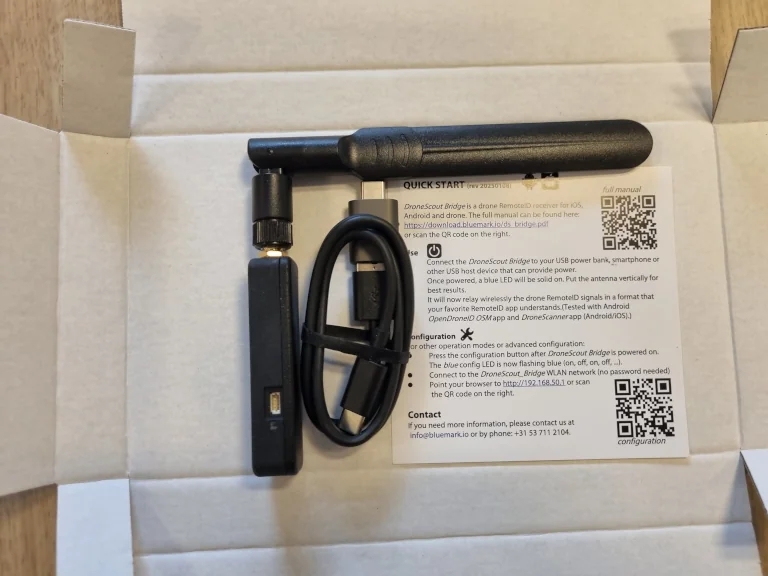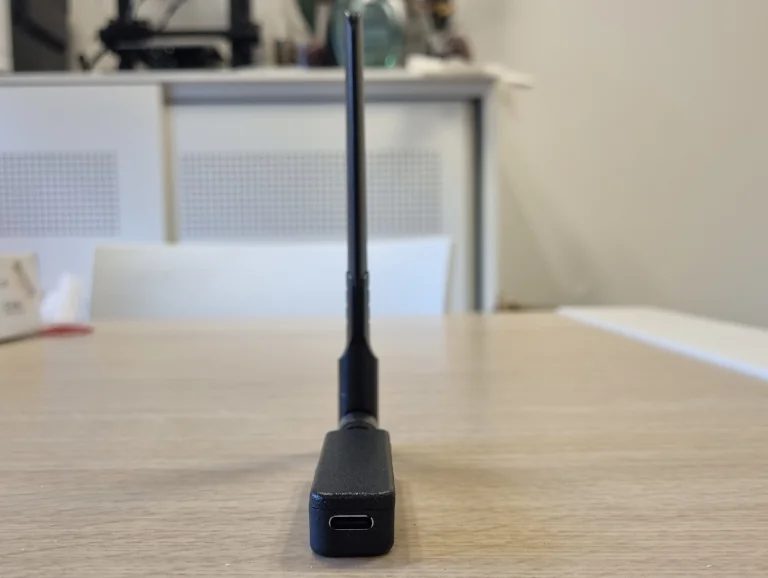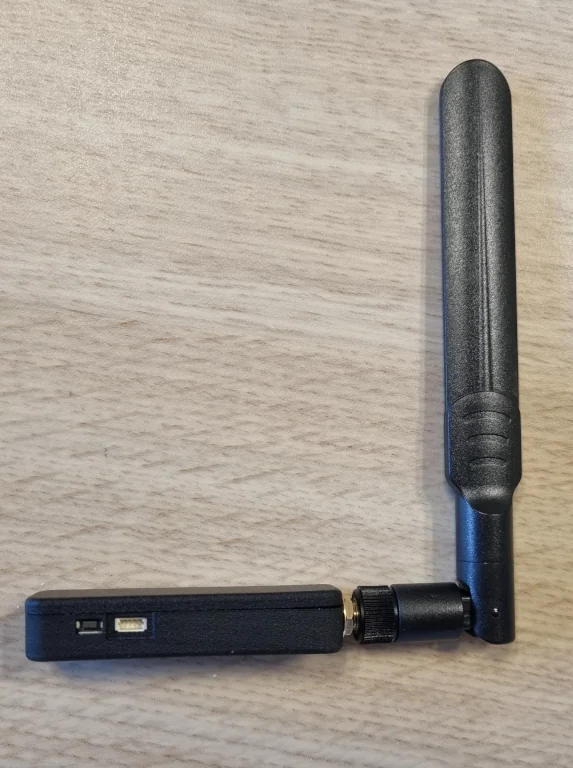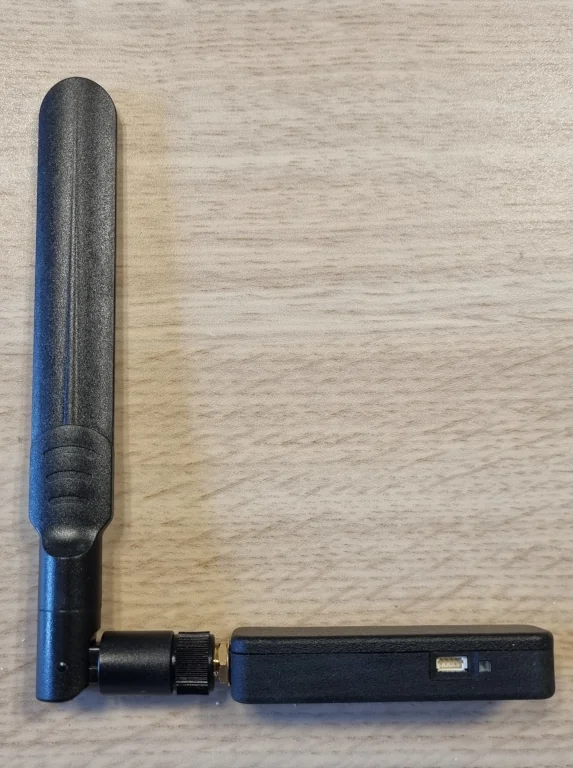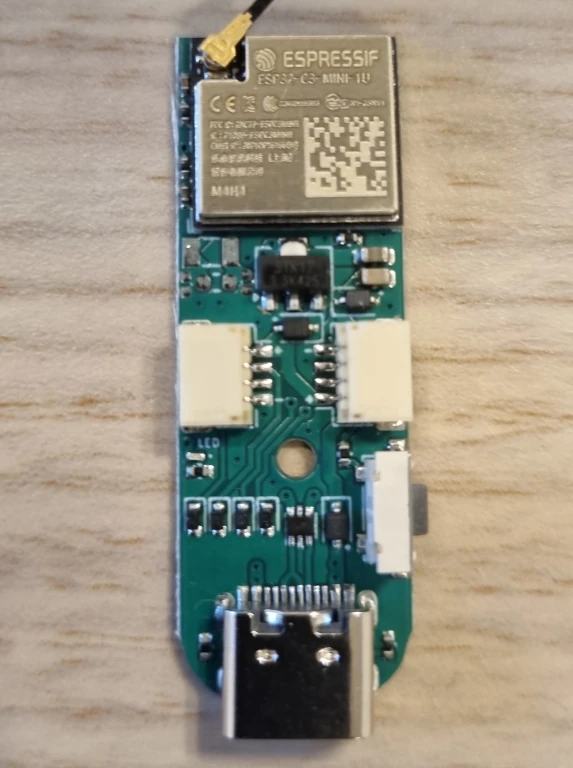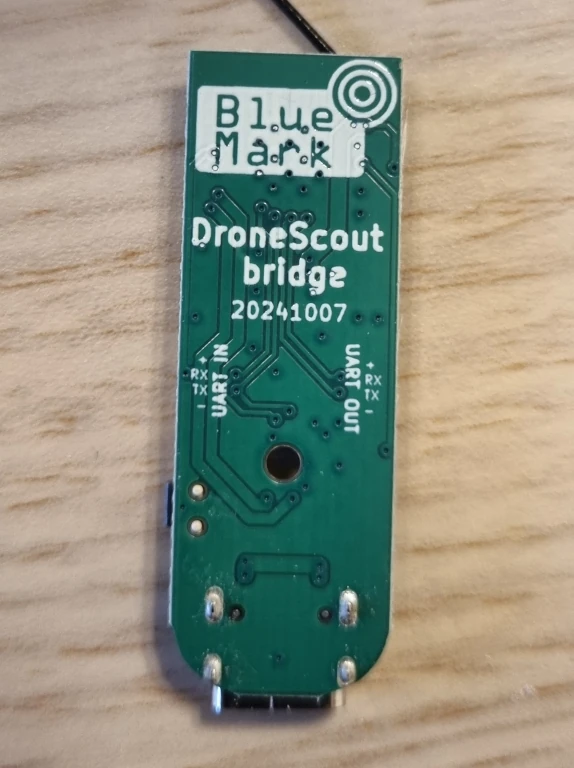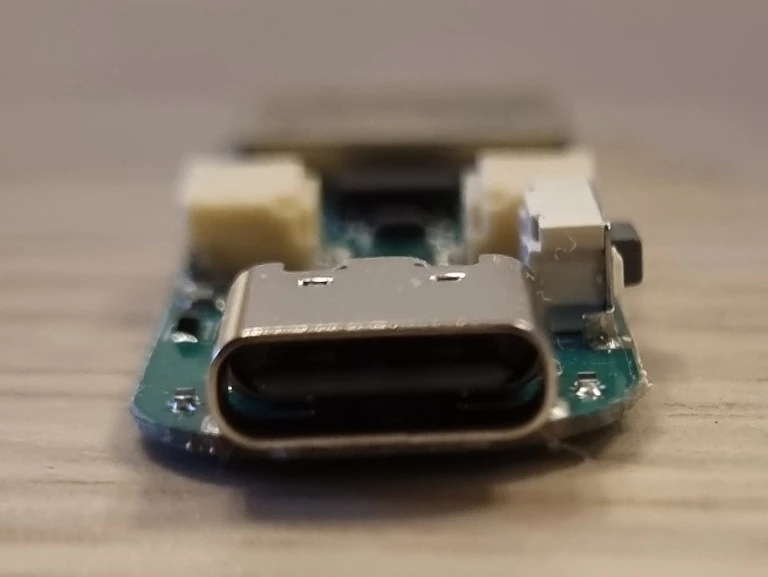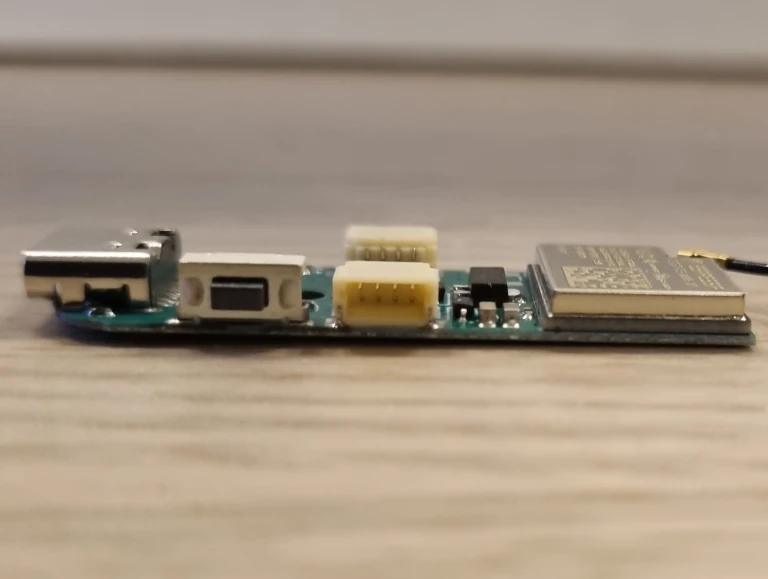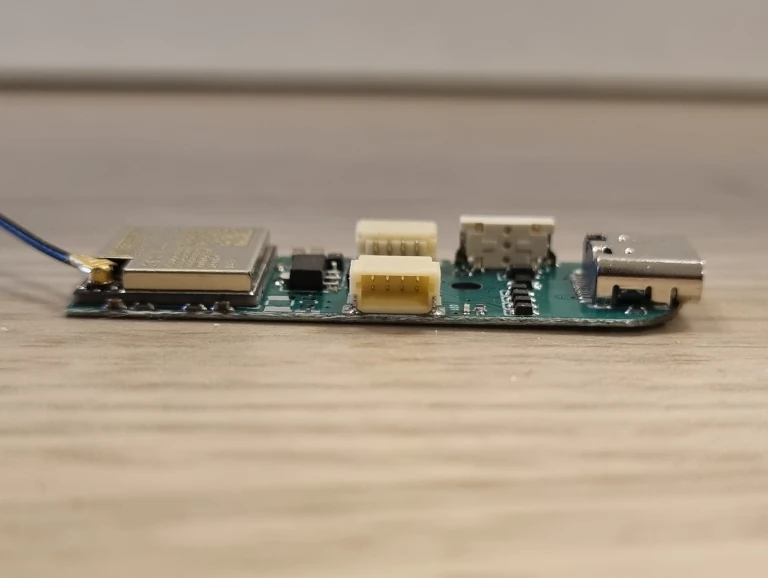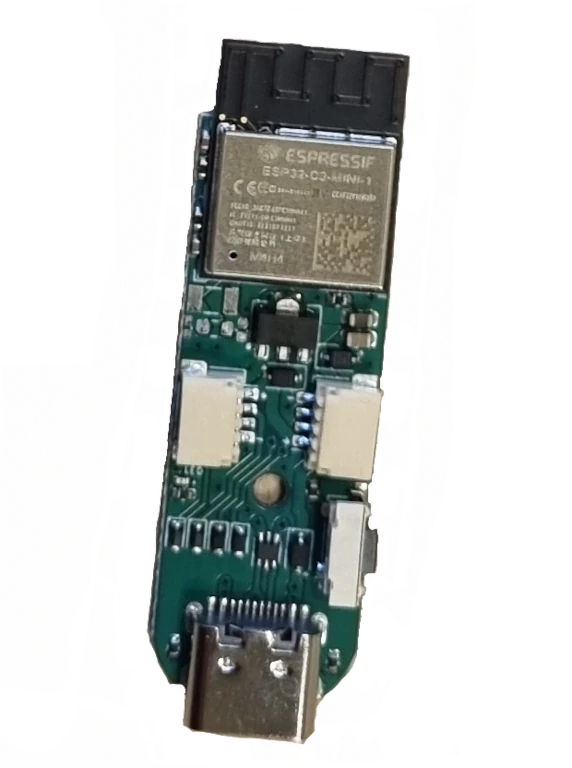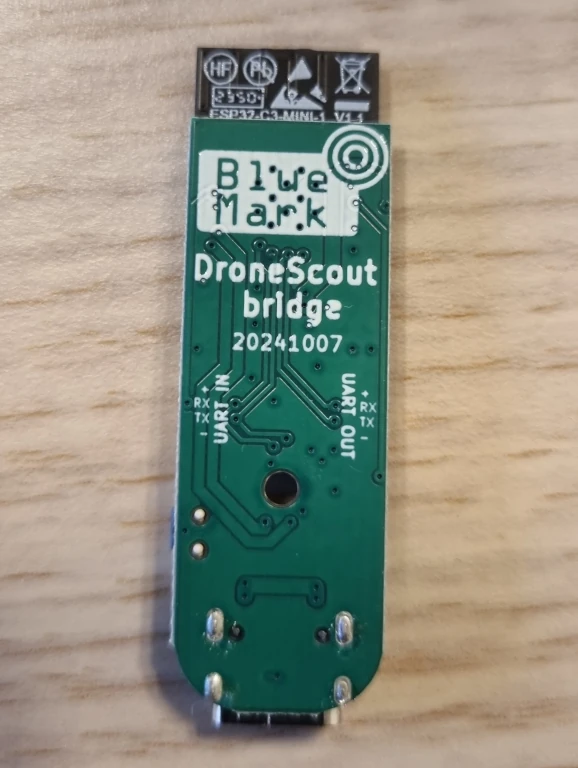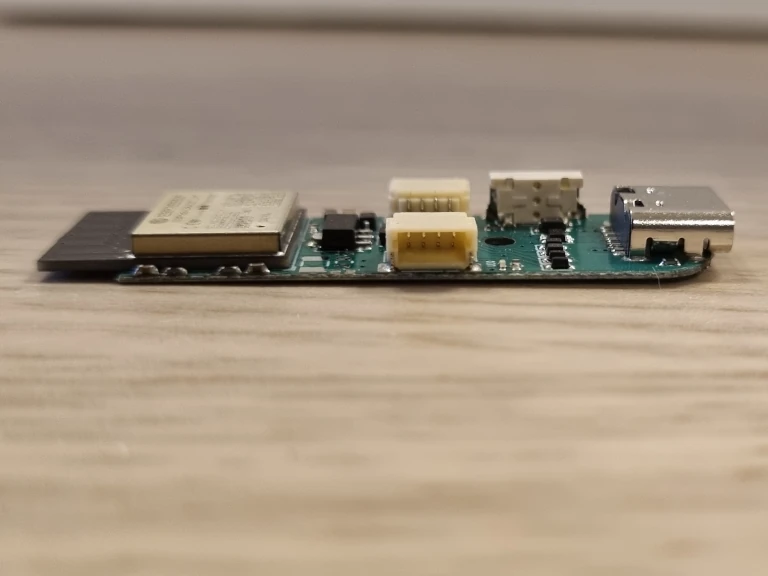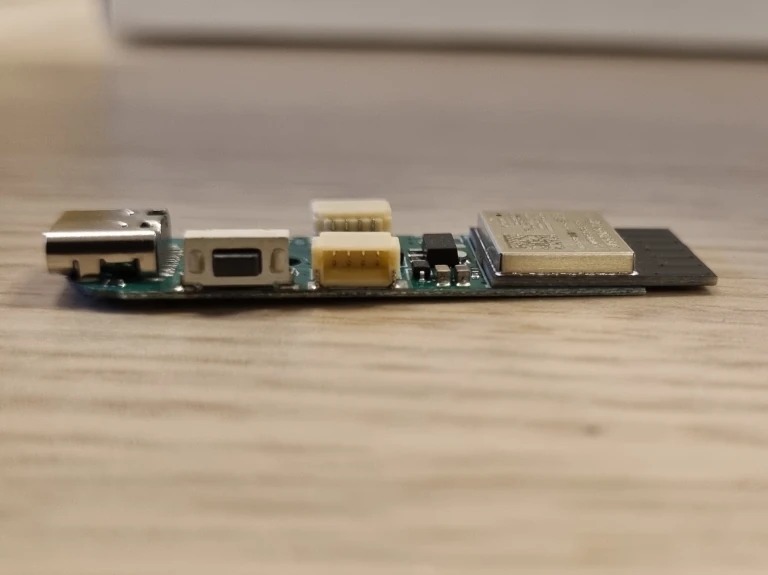DroneScout Bridge is a very small receiver (46 by 14 mm and 3.5 gram!) to detect drones with RemoteID. This wireless number plate technology is mandatory for most drones in Japan, USA and the European Union. The device has several operation modes.
First, it can act as wireless relay. Receive popular drones with RemoteID and convert it to a wireless signal that most smartphones (iOS/Android) understand. You can keep using your favorite RemoteID app.
Second, it can convert the detected RemoteID signals to MAVLink messages (ADSB_VEHICLE or OPENDRONEID message packs) and transmit them using the UART JST-SH 4-pin output connector. Use this for Detect And Avoid (DAA) applications running on your drone or aircraft. Or connect it to your favorite (embedded platform) to enable reception of RemoteID signals. Example Python and C code is provided.
Do you need a more powerful RemoteID receiver, check out our DroneScout receiver page.
Products
ds100 retail
Retail version of the DroneScout Bridge with enclosure, RP-SMA connector and high-gain antenna
ds100 (PCB) with external antenna
The ds100 is a PCB-only version of DroneScout Bridge with IPEX3 antenna connector (including antenna)
ds101 (PCB) with internal antenna
The ds101 is a PCB-only version of DroneScout Bridge with onboard/internal antenna.
ds110 retail
Triple-band (2.4/5/5.8 GHz) version of the DroneScout Bridge retail: with enclosure, RP-SMA connector and high-gain antenna
DroneScout pro app (iOS/Android)
Use the Bridge with our Android/iOS app! More info can be found on this page.
Applications
Review by Alien Drones (and why you need our Bridge device): https://www.youtube.com/watch?v=dZP9AWuHpXg
Do you want to receive RemoteID signals from popular drones and have a larger detection range on your phone? DroneScout Bridge is a small device that relays RemoteID signals into a wireless signal that your smartphone understands. See also this review in Dutch.
Do you want to know if your drone is RemoteID compliant? DroneScout Bridge performs 10 basic checks. See the manual for more details (and limitations).
Do you need a RemoteID receiver for your drone or aircraft for DAA (Detect and Avoid) applications? DroneScout Bridge can output detected RemoteID signals using a MAVLink interface. We provide example source code to receive and display messages. See the manual for more information.
Roadmap
DroneScout bridge is the start of a family of products. Most features and models have been released. The only outstanding item is the API.
API
Multiple DroneScout Bridge devices can be connected to each other to improve the detection of RemoteID signals. For that reason, each device has an IN and OUT UART MAVLink connector. At the moment each bridge devices forwards information from the IN to OUT connector (and vice versa). Device configuration can be done in the so-called configuration mode. An API will have benefits, so you can do the same using the MAVLink interface. Time line: unknown.

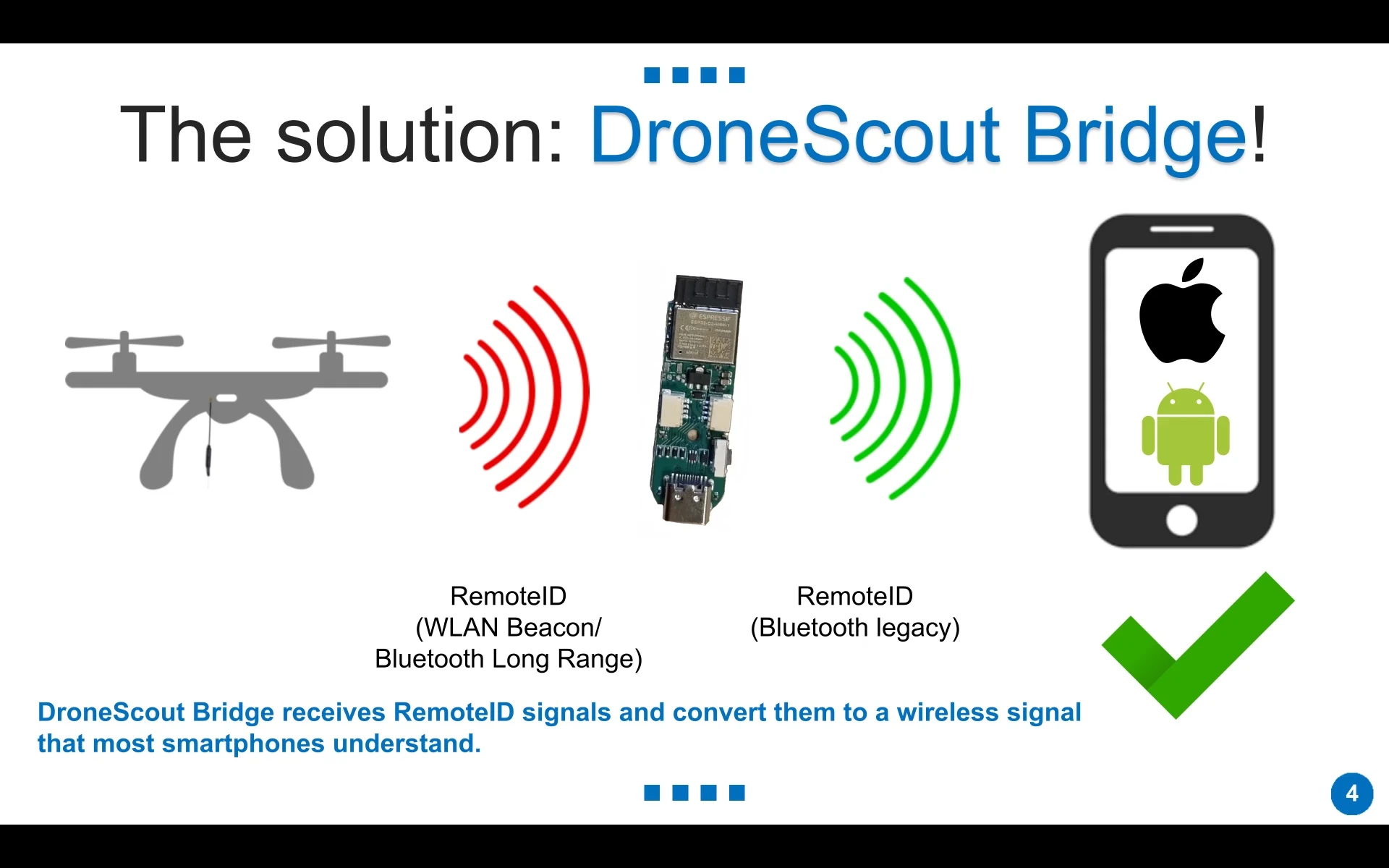

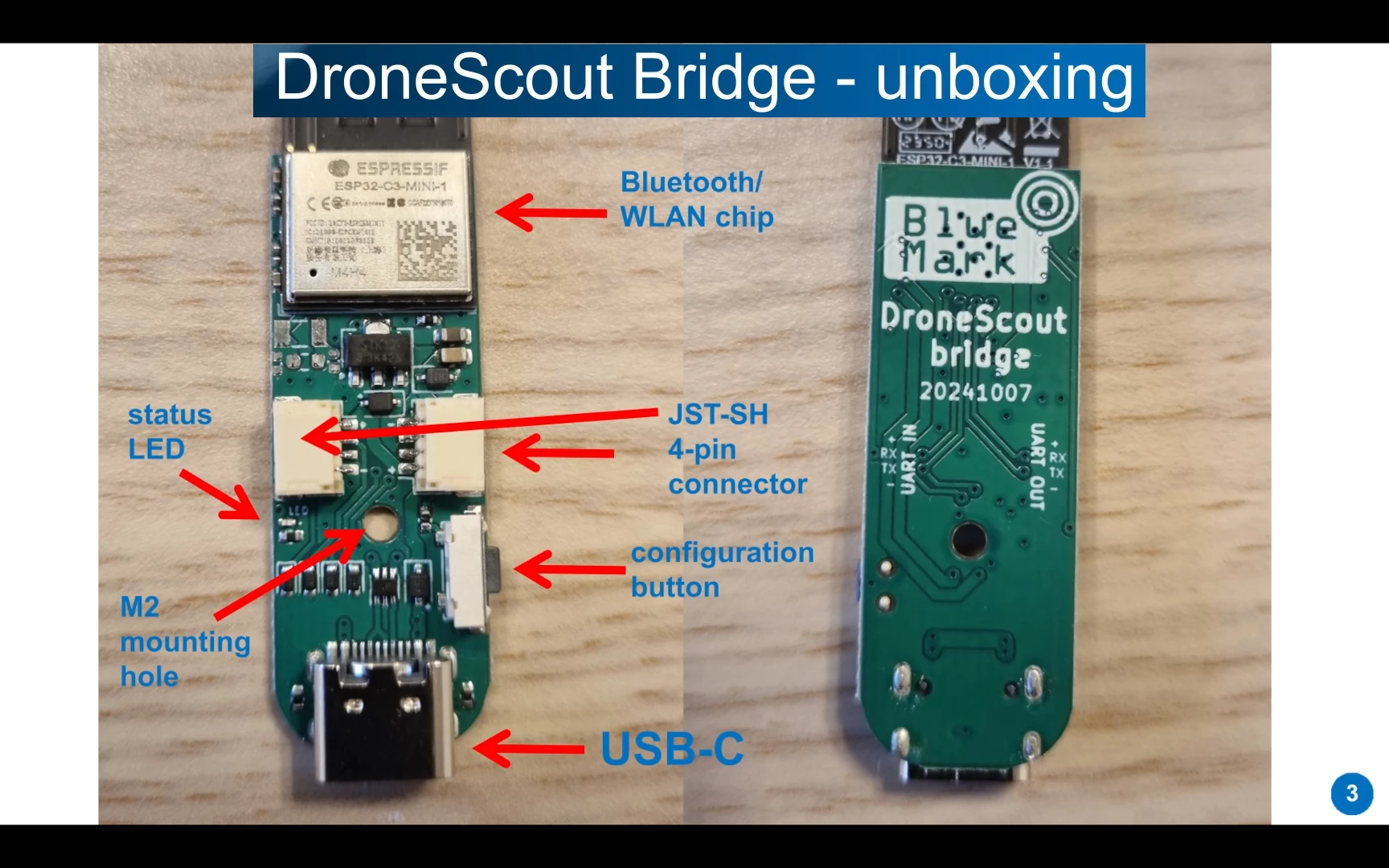
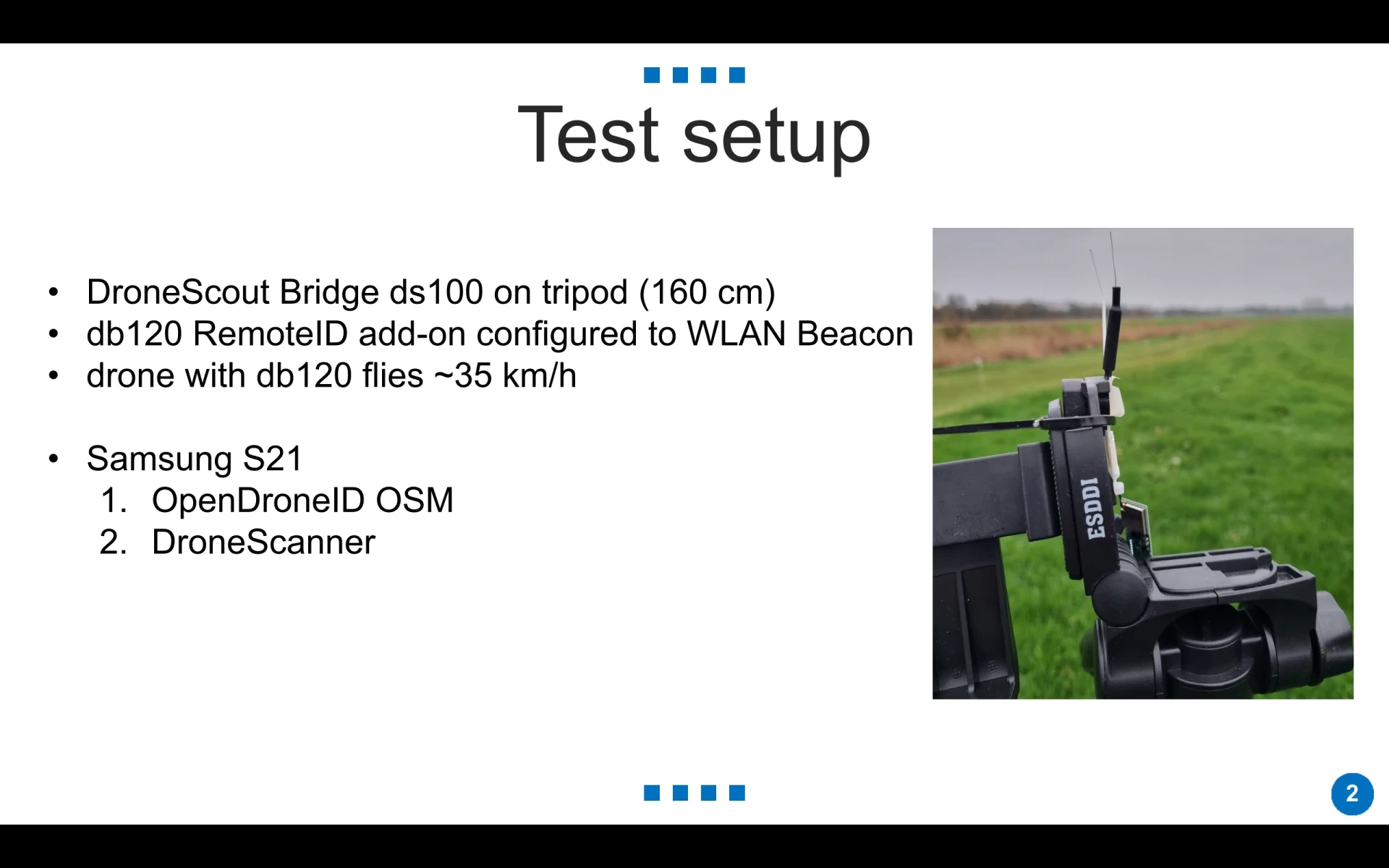
Specifications
Short-range radio
Bluetooth 2.4 GHz
WiFi 2.4 GHz
WiFi 5 and 5.8 GHz
Antennas
5 dBi antenna (RP-SMA connector), can be replaced with other antennas.
Detection range
up to 2 km. The actual detection range depends on a lot of factors.
Power
USB-C (powered by smartphone or USB power bank)
or JST-SH 4-pin connector: 5 -15 V
Average current consumption
450 mW
Connectivity
USB-C (serial interface)
2x JST-SH 4-pin connector (IN and OUT)
Bluetooth 4 (wireless relay mode)
Fastening mechanism
N/A
Operating temperature
-20°C to +85°C
Dimensions
71 x 24 x 13 mm (excluding antenna and connector)
111 x 24 x 13 mm (angled antenna, antenna 135 mm high)
antenna 157 mm (x 18 x 12 mm)
Weight
32 gram
Short-range radio
Bluetooth 2.4 GHz
WiFi 2.4 GHz
Antennas
5 dBi antenna (RP-SMA connector), can be replaced with other antennas.
Detection range
up to 2 km. The actual detection range depends on a lot of factors.
Power
USB-C (powered by smartphone or USB power bank)
or JST-SH 4-pin connector: 5 -15 V
Average current consumption
450 mW
Connectivity
USB-C (serial interface)
2x JST-SH 4-pin connector (IN and OUT)
Bluetooth 4 (wireless relay mode)
Fastening mechanism
N/A
Operating temperature
-20°C to +85°C
Dimensions
75 x 18 x 13 mm (without antenna and antenna connector)
antenna 157 mm (x 18 x 12 mm)
Weight
26.4 gram (12.7 gram without antenna)
Short-range radio
Bluetooth 2.4 GHz
WiFi 2.4 GHz
Antennas
3 dBi antenna (IPEX3 connector), can be replaced with other antennas.
Detection range
up to 1.5 km. The actual detection range depends on a lot of factors.
Power
USB-C (powered by smartphone or USB power bank)
or JST-SH 4-pin connector: 5 -15 V
Average current consumption
450 mW
Connectivity
USB-C (serial interface)
2x JST-SH 4-pin connector (IN and OUT)
Bluetooth 4 (wireless relay mode)
Fastening mechanism
M2-mounting hole
Operating temperature
-20°C to +85°C
Dimensions
42 x 14 x 4 mm (without antenna)
Weight
3.5 gram
Short-range radio
Bluetooth 2.4 GHz
WiFi 2.4 GHz
Antennas
PCB antenna (internal/onboard) 3 dBi antenna
Detection range
up to 1 km. The actual detection range depends on a lot of factors.
Power
USB-C (powered by smartphone or USB power bank)
or JST-SH 4-pin connector: 5 -15 V
Average current consumption
450 mW
Connectivity
USB-C (serial interface)
2x JST-SH 4-pin connector (IN and OUT)
Bluetooth 4 (wireless relay mode)
Fastening mechanism
M2-mounting hole
Operating temperature
-20°C to +85°C
Dimensions
46 x 14 x 4 mm
Weight
2.5 gram

